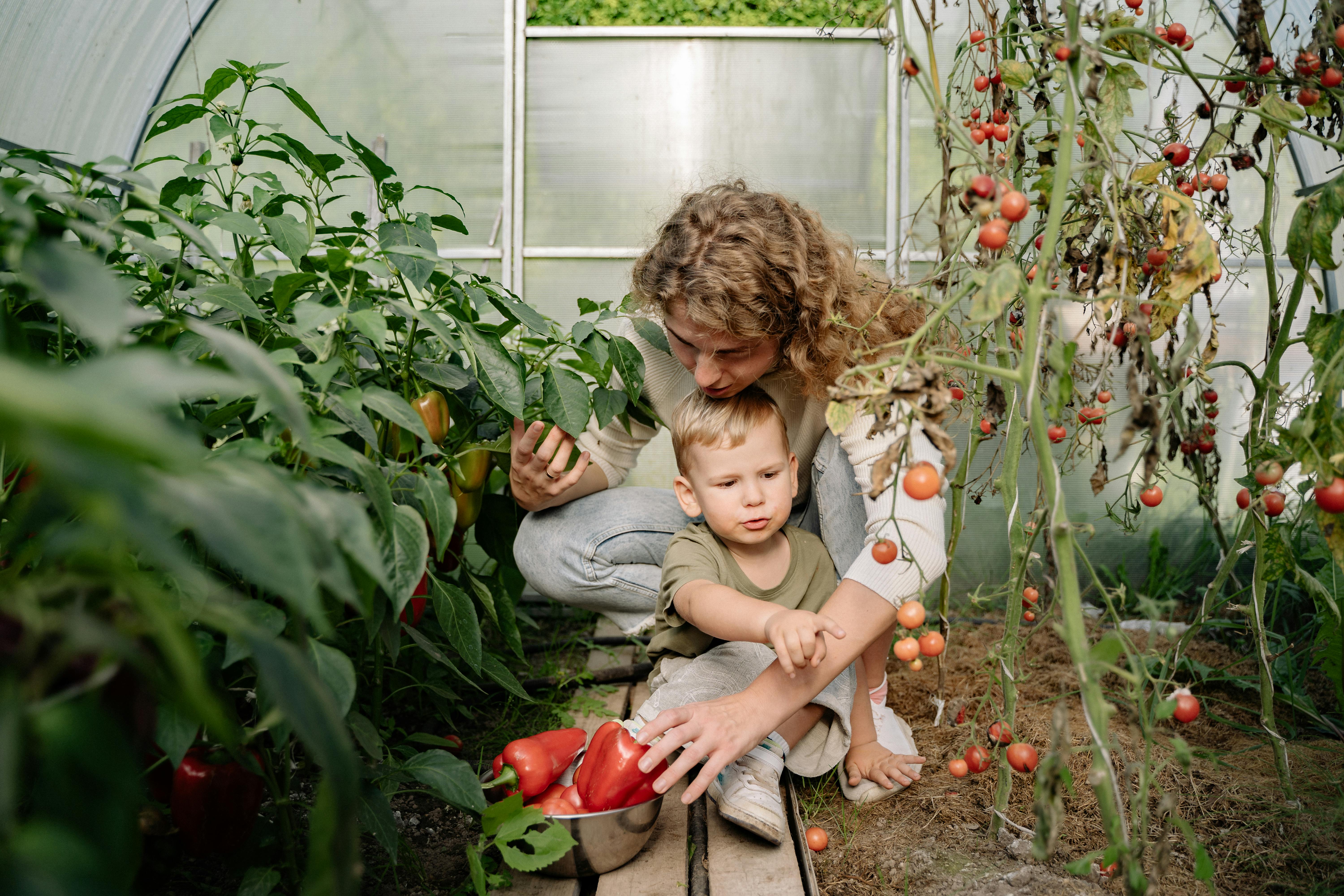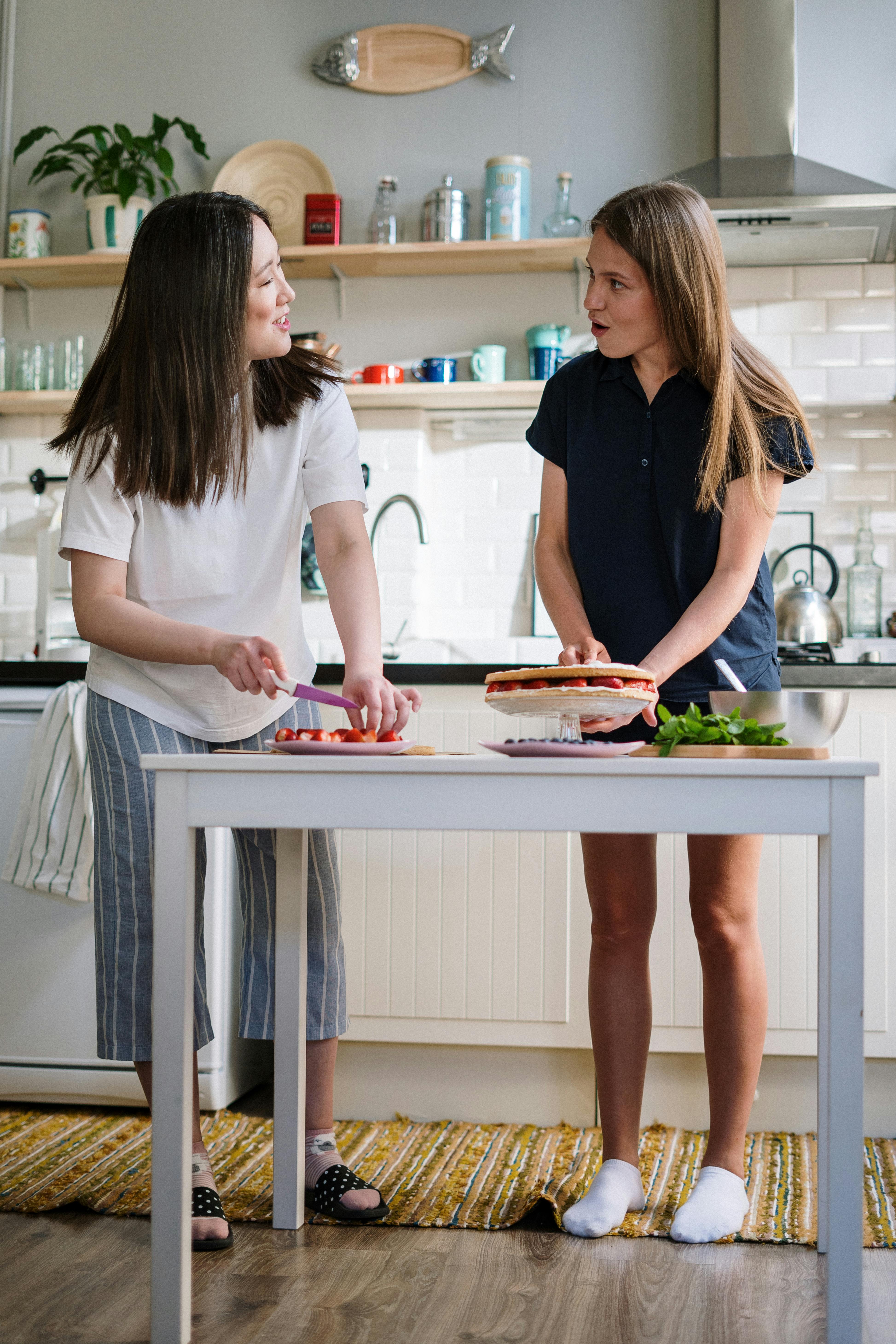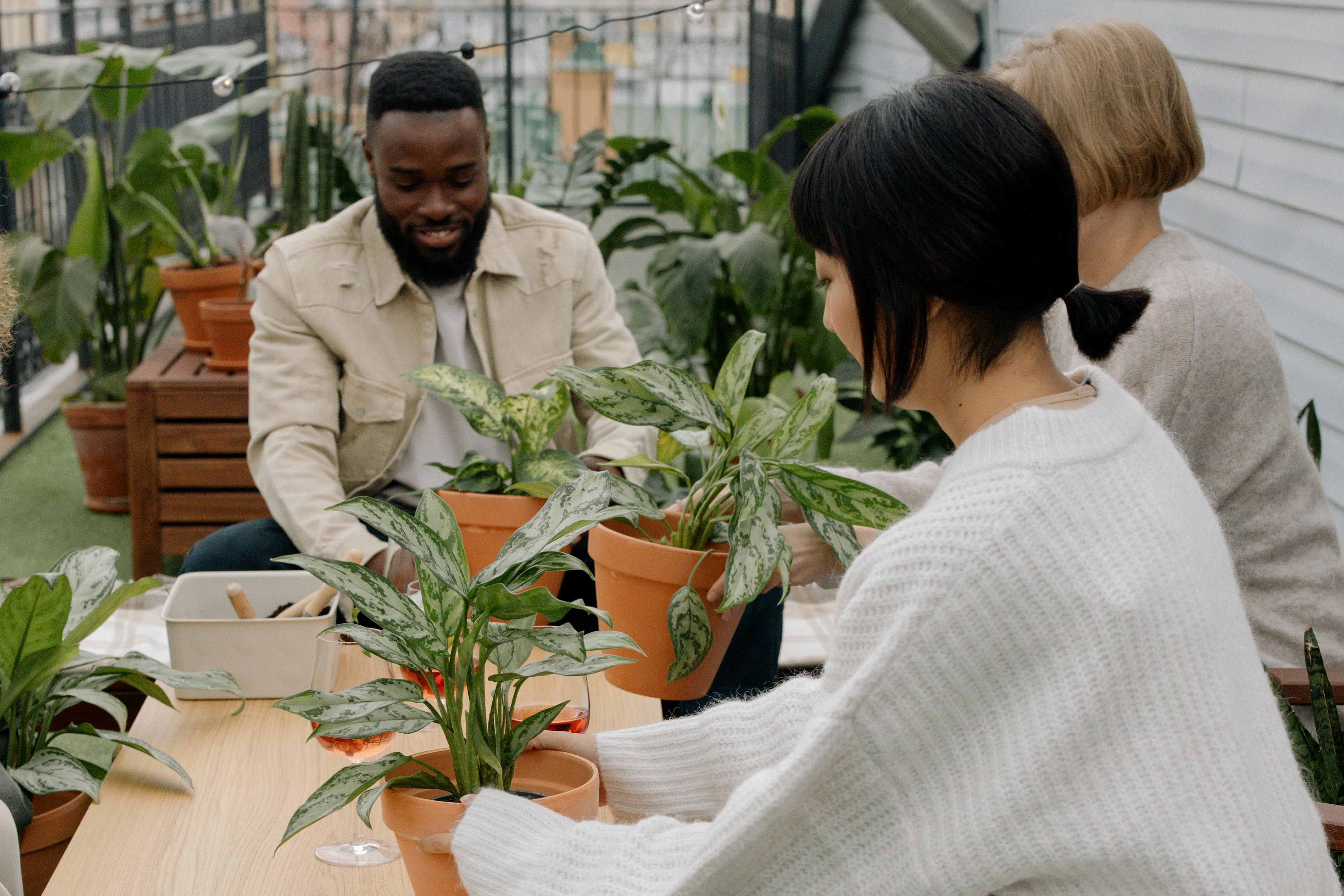
How to Start and Grow a Homesteading Community in 2025
Start and grow a homesteading community in 2025! Learn to raise chickens, grow food, and connect with others across Australia—whether you live in a city, suburb, or rural area.
Have you ever dreamt about reaping the rewards of a self-sufficient lifestyle—fresh eggs in the morning, crisp veggies out of your own garden, meaningful connections with neighbours, and the satisfaction that you’re living in harmony with nature? If so, you’re in good company. These days, more people than ever are starting or joining a homesteading community. The reasons are plentiful: to better control the quality of their food, to reduce their carbon footprint, or simply to reconnect with others in a world that’s increasingly online and disconnected.
But what exactly is a homesteading community, especially in the modern context of 2025? How do you get started if you have limited space (maybe just a standard suburban backyard in Australia or even an apartment balcony)? And how do you build meaningful connections that turn a simple urban homestead project into a thriving, resilient collective?
In this comprehensive guide, we’ll explore how to start a homesteading community, whether you’re on a quarter-acre suburban homestead in Canberra, a sprawling acreage in rural South Australia, or simply dream of growing more of your food while living in the city. We’ll delve into personal success stories, practical tips, and common roadblocks, plus highlight how a community-focused platform like Bunchups can help you meet like-minded people who share your passion for urban or suburban homesteading. Let’s dig in.
Understanding the Modern Homesteading Movement
The Roots of the Homesteading Community
Homesteading has been around for centuries, often associated with families living off the land, rearing animals for milk and meat, growing fruit and vegetables, and preserving harvests for the winter. But in 2025, the term homesteading community covers a wide spectrum—from folks living off-grid and producing all their own power to apartment dwellers who simply grow herbs on a sunny windowsill and bake their own bread once a week.
The common thread across these variations is self-sufficiency and intentional living. For many Australians, it also involves building resilience against climate extremes, lowering household costs, and reconnecting with a sense of neighbourhood community that can sometimes be lost in busy, modern cities.
Australia’s Shifting Landscape
From the northern outback to the lush Adelaide Hills, Australia hosts an array of climates that can challenge even the most dedicated homesteader. As the climate changes, reliable rainfall zones (once marked by references like Goyder’s Line in South Australia) are shifting further south. This presents fresh hurdles—but also new opportunities—to grow produce, keep animals, and store water wisely.
Despite these challenges, urban and suburban homesteading is becoming more appealing. Rising supermarket prices, concerns over food quality, and a desire to cut down on waste have propelled more Australians into planting fruit trees, composting scraps, and even keeping bees or backyard chickens.
Laying the Foundations of Your Homesteading Community
Start Small, Think Big
Whether your homesteading dream begins with a suburban homestead on a quarter-acre block or a simple urban homestead on an apartment balcony, the key is to start small. Try planting a few herbs, adding a couple of fruit trees, or learning a new skill like composting. For instance:
- Herbs in Pots: Parsley, basil, and thyme can thrive in small spaces.
- Vertical Gardens: If land is scarce, grow strawberries, leafy greens, or dwarf tomatoes on a trellis or in stacked planters.
- Community Plots: If your home has no yard, many towns and suburbs have community gardens where you can rent or share a plot.
Over time, as you gain confidence and see the fruits (literally!) of your labour, expand your homesteading projects. Maybe you’ll add chickens for fresh eggs or install a worm farm to recycle kitchen scraps into nutrient-rich castings for your soil.
Defining Your Purpose
A homesteading community is about more than just growing food. It’s about forging meaningful connections, sharing surplus produce, teaching and learning from each other, and building local resilience. Before you set up that first raised bed or invite neighbours to join, clarify your goals:
- Self-Sufficiency: Do you want to rely less on supermarkets, or eventually grow and preserve most of your own produce?
- Community Engagement: Are you eager to share skills, seeds, or labour with neighbours?
- Reduced Environmental Impact: Do you dream of a lower-carbon footprint lifestyle, complete with solar panels and water tanks?
Having clear motivation helps set the tone of your community and encourages people with similar values to join.
Involving Your Household
If you share your home with a partner, children, or friends, remember that they’ll be affected by your homesteading efforts. Get them on board:
- Explain the Vision: Show how fresher, chemical-free veggies or ethically raised eggs benefit everyone.
- Involve Them Early: Let your kids pick which vegetables to grow, or have your roommates help build a small greenhouse.
- Plan for Chores and Time: Daily tasks like watering or collecting eggs should be split fairly, so no one feels overwhelmed.
Building a Network Beyond Your Backyard
Why Community Matters
Living off the land can sometimes feel solitary. Yet, as many seasoned homesteaders discover, forging a homesteading community makes the journey more enjoyable—and more sustainable. An active network can:
- Trade Knowledge: Learn how to pickle vegetables or spin your own wool from a neighbour who has experience in that area.
- Share Equipment: From garden mulchers to solar dehydrators, sharing gear can cut down on upfront costs.
- Group Sourcing: Buy seeds and other supplies in bulk for discounts that benefit everyone.
Connecting Through Bunchups
One of the hardest parts can be finding these like-minded folks—especially if you’re a newcomer to a city or suburb. That’s where a platform like Bunchups can step in. Instead of simply hosting big events, Bunchups foster meaningful in-person or online gatherings (small meetups) based on shared interests.
- Host a “Homestead Skills” Meetup: Want to learn how to raise chickens, preserve jams, or start a worm farm? Host or attend a small gathering through Bunchups and connect with others in your area who have similar interests.
- Make New Mates: Bunchups is ideal for Australians who feel isolated, have just moved to a new suburb, or want to find local accountability partners for tasks like orchard planting or yoga-based gardening stretches.
- Share Surpluses: Have 20 kilos of summer tomatoes? Organise a Bunchups canning session with neighbours. You not only share produce but also split costs and labour for canning supplies.
From board game nights to joint gardening sessions, Bunchups provides a supportive way to meet people who share your passions, ensuring your homesteading community thrives on genuine relationships.
Key Skills and Projects to Kickstart Your Homesteading Community
Below are some practical avenues your homesteading group can explore together. Each can be scaled to suit an urban homestead or a larger suburban homestead.
1. Growing Organic Food
- Vegetable Patch: Focus on easy-win crops like zucchini, beans, leafy greens, and tomatoes. In cooler climates (like Canberra), consider raised beds that warm up faster in spring.
- Fruit Trees: Apple, plum, apricot, and citrus trees can prosper in many Australian regions. Even small spaces can accommodate dwarf varieties.
- Companion Planting: Maximise productivity and natural pest control by placing compatible plants together. For example, basil grows well with tomatoes and repels some insects.
Here are some soil health tips for you that would be helpful.
- Composting & Worm Farms: Turn kitchen scraps into nutrient-rich compost or worm castings. Keep a separate container for composting and a small worm farm if you’re in an apartment.
- No-Dig Beds: Layer cardboard, straw, compost, and manure to create a rich, water-retentive bed.
- Greywater Reuse: With appropriate local council permissions, channel water from your shower or laundry to water ornamental plants or fruit trees. Make sure to use eco-friendly soaps and detergents.
2. Preserving and Storing Food
From jams to dehydrated veggies, preserving food is part of the fun of homesteading. Have a surplus of apricots this summer? Turn them into jam or dehydrate them for snacks all year round.
- Water Bath Canning: Perfect for acidic foods like tomatoes, pickles, or fruits.
- Fermenting: Make sauerkraut or kimchi to extend the shelf life of your produce while boosting gut health.
- Dehydrating: Sun-drying or using a solar-powered dehydrator can preserve everything from apples to herbs.
Preservation days are an excellent group activity within a homesteading community. Multiple pairs of hands get the job done faster, and the conversation makes it feel more like a social gathering than a chore.
3. Raising Backyard Animals
- Chickens: Fresh eggs are one of the main reasons many people start homesteading. In many Australian suburbs, hens (but not roosters, due to noise) are allowed. Remember to check local council rules.
- Ducks: A fun alternative to chickens, ducks also lay tasty eggs and help reduce insect populations.
- Bees: Urban beekeeping is on the rise in cities like Melbourne, Sydney, and Adelaide. You’ll just need a spot with the morning sun, some wind protection, and water nearby.
3.1 Animal Welfare and Regulations
Every council in Australia has its own by-laws for keeping animals. Always check for regulations on coop size, noise, and boundary distances. Having a network can help ensure each homesteader follows best practices, from ethically raising animals to managing manure.
4. Harnessing Energy and Water
- Rainwater Tanks: Even a small tank can supply extra water for your garden during dry spells, especially in water-restricted areas.
- Solar Panels: With Australia’s abundant sunshine, solar energy offers both environmental and economic benefits. Some homesteaders combine panels with battery storage to reduce reliance on the grid.
5. Building Skills and Confidence
A homesteading community can pool knowledge and resources to teach each other essential skills. Topics might include:
- Natural Cleaning Products: Make your own eco-friendly soaps, laundry detergents, and surface cleaners with common ingredients like vinegar, bicarb soda, and essential oils.
- Basic Carpentry: Build a raised garden bed or chicken coop with reclaimed timber.
- Crafting and Textiles: Sew reusable bags, crochet potholders, or upcycle clothes to reduce household waste.
Overcoming Common Challenges
Time Constraints
Between work, family, and social obligations, time is a precious resource. Break large homesteading projects into bite-sized tasks. Focus on:
- Meal Planning and Batch Cooking: Ensures you always have healthy, homegrown meals and reduces last-minute trips to the shops.
- Shared Workbees: Gather your community members for a day to build fences, plant fruit trees, or make jam. When tasks are shared, they become faster and more fun.
Budget Considerations
The costs of setting up a homestead—like water tanks, chicken coops, or beehive setups—can add up. However, once established, homesteading can reduce your ongoing grocery bills. In addition:
- DIY Projects: Look for free pallets, offcuts of timber, or second-hand supplies on local noticeboards.
- Swaps and Trades: Exchange seeds, seedlings, or surplus produce to keep costs down.
- Bulk Buys: Your homesteading community can pool resources to purchase seeds, soil amendments, and canning jars in bulk at lower prices.
Council Regulations and Neighbourhood Bylaws
Some suburbs are more lenient than others. Before building that greenhouse or adding livestock:
- Contact Your Council: Check guidelines on animal keeping, water usage, and structures like greenhouses or coops.
- Join Local Groups: Online forums or social media groups for your city or suburb can be a goldmine of information. Others might have navigated similar regulatory hurdles and can offer advice.
Dealing with Doubters
Family or friends who don’t share your homesteading enthusiasm might initially find your lifestyle odd. Show them the tangible benefits:
- Fresh, Delicious Produce: A single bite of homegrown tomatoes often converts the sceptics.
- Cost Savings: Keep tabs on how much you’re saving on groceries or energy bills.
- Health and Well-being: Gardening and caring for animals has proven mental and physical health benefits.
Nurturing Community Spirit: Beyond the Garden
Events, Workshops, and Gatherings
A thriving homesteading community does more than just grow food. It also grows friendships and knowledge. Some ideas to keep the momentum:
- Skill-Sharing Saturdays: Take turns hosting short workshops, whether on beekeeping basics, organic pest control, or soap making.
- Preservation Parties: Turn canning sessions into a potluck. Everyone brings their produce, jars, and a plate of food to share.
- Rubbish Clean-Up and Upcycling Days: Tackle environmental issues in your suburb while hunting for potential upcycling treasures.
Harnessing the Power of Bunchups
Remember Bunchups? You can create small gatherings or meetups to:
- Share Seeds: A seed-swapping session in early spring, where everyone brings seeds or cuttings to share.
- Plan a Market Stall: Coordinate a group to sell or trade surplus produce or homemade crafts at local markets.
- Organise Fitness Meetups in the Garden: Turn yard chores into fun activities by inviting others to join you, ensuring you combine physical exercise with something productive like garden maintenance or orchard planting.
Since Bunchups focuses on small gatherings rather than large events, you’ll get the chance to know the people in your area—fostering friendships that go well beyond swapping tomatoes and eggs.
Fostering Inclusion
Not everyone can physically labour in a garden or keep animals in their home. Some might be living with a disability, renting a unit, or simply lacking the time. A welcoming homesteading community offers alternative ways to contribute. For example:
- Light Tasks: Let them help label preserves, design homesteading community flyers, or do online research.
- Online Planning: Virtual meetups for knowledge sharing and skill swaps can be valuable for people who can’t always make it in person.
- Shared Plots: Community gardens often have raised beds accessible for people with mobility challenges.
From Backyard Dream to Thriving Homesteading Community
By now, you might be thinking, “This sounds great, but can I pull it off?” The good news is yes—you absolutely can. Take heart from the real stories shared by Australian urban homesteaders in places like Canberra and Adelaide. They overcame harsh climates, clay soils that crack in the sun, limited budgets, and sceptical neighbours. Yet they found success through perseverance, creativity, and—crucially—by tapping into a supportive homesteading community.
A Quick Glance at the Success Stories
- Canberra’s Backyard Orchard: One family started with a 1000sqm block and slowly converted a third of it into a flourishing orchard and veggie patch. Over a decade, they introduced chickens, and bees, and learned to preserve massive amounts of fruit.
- Small-Scale Homesteading in South Australia: Searing summer winds and clay soil might have seemed like deterrents, but resourceful gardeners discovered ways to compost, mulch, and select drought-tolerant crops. With a strong local network, they tapped into neighbouring knowledge, overcame scorching northerly winds, and built sustainable lifestyles one season at a time.
If they can do it, so can you. Step by step—plant by plant, conversation by conversation—you’ll transform your home, your yard, and your neighbourhood into a place of abundance, community spirit, and genuine human connection.
Additional Resources for Australian Homesteaders
- Australian Department of Agriculture, Fisheries and Forestry: www.agriculture.gov.au An excellent resource for official guidelines, grants, and agricultural best practices.
- Bunchups: Join or Host a Gathering on a fantastic platform for discovering and creating small, meaningful meetups with like-minded individuals in your area.
- Local Council Websites: Rules for backyard animals, water tank installations, and permitted structures vary. Always check your local council pages for the latest regulations.
- Australian Gardening Magazines and Forums: Highly recommended for region-specific tips, from composting methods to seed swaps.
Ready to Start Your Own Homesteading Community?
As 2025 unfolds, there’s never been a better time to embark on your homesteading community journey. Whether you’re in the heart of a bustling city with just a couple of pots for herbs or have ample land in a suburban or rural region, you can contribute to a more sustainable, connected future.
Remember:
- Start small. Build confidence with each successful harvest or new skill mastered.
- Prioritise community. Reach out to neighbours, use platforms like Bunchups, host gatherings, and share knowledge.
- Learn continuously. Challenges like climate extremes, time constraints, and council regulations will arise, but perseverance, creativity, and a supportive network will see you through.
You’re now equipped with the essential tools and inspiration to grow a homesteading community that’s as vibrant, productive, and enriching as the land that you cultivate. Here’s to fresh produce, meaningful connections, and the shared joy of living life a little more fully and sustainably—together.


































.jpg)













.jpg)










































